Eurostar + ICE
You can reach Austrian ski resorts with daytime journeys via Brussels and enjoy the space and restaurant carriages of ICE and Railjet trains en route.
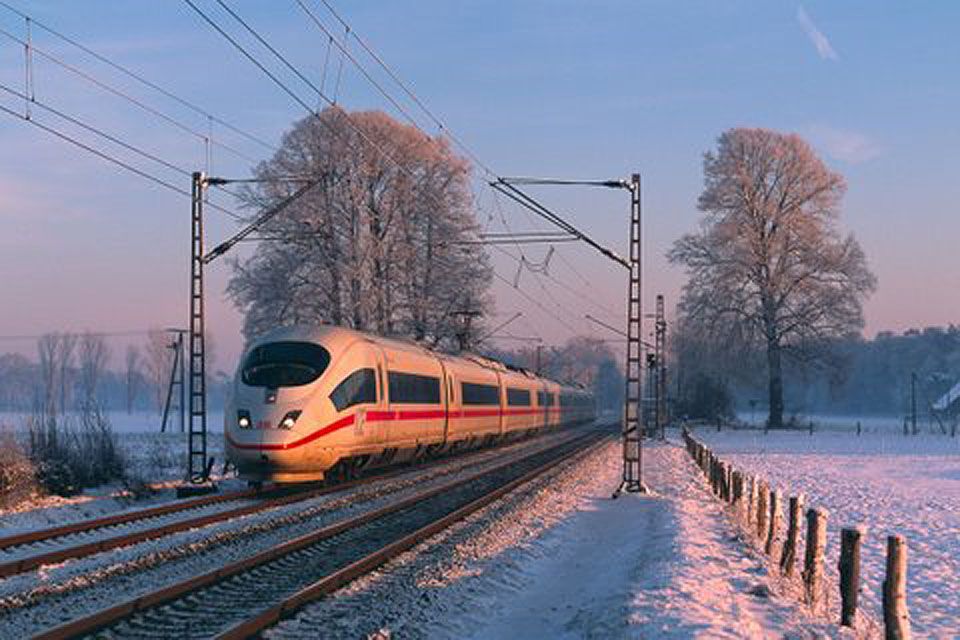
On paper, the Austrian Alps might look a long way by train, but it's actually only a few hours further than French resorts.
Combining the Eurostar to Brussels with onward ICE trains taking you through Germany and Austria, you're in for a smooth and scenic journey, where quality is more important than duration.
In the following guide, we'll give you the lowdown on how this works.
Step 1: Take the Eurostar to Brussels
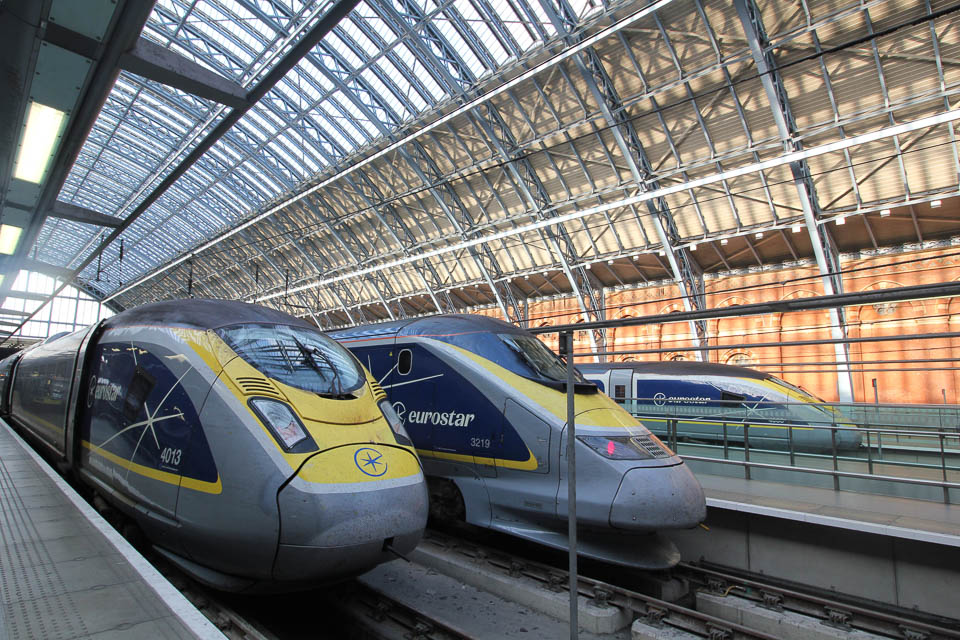 Eurostar train at St PancrasPhoto: Daniel Elkan
Eurostar train at St PancrasPhoto: Daniel Elkan
From London St. Pancras, you’ll board the Eurostar and speed towards Bruxelles-Midi
Pop open the bubbles, have a chat with your friends, go to the café-bar, read a book, and watch the scenery glide by.
There are lots of great ways to spend your time on board and before you know it, your Eurostar will arrive in Bruxelles-Midi.
You may want to read our guide to what the Eurostar is like on board.
Step 2: Board the ICE
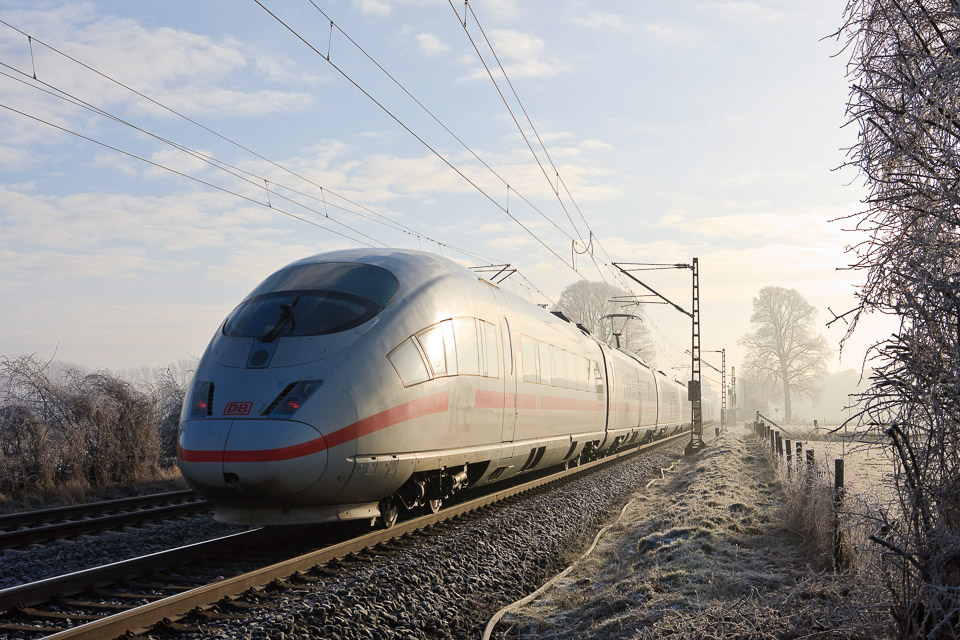 ICE trainPhoto: Deutsche Bahn AG Georg Wagner
ICE trainPhoto: Deutsche Bahn AG Georg Wagner
Photo: Daniel Elkan
At Brussels, it's a quick change of platform from the Eurostar to the ICE. Sometimes the platforms are adjacent, making the switch about as easy as it gets.
On board the ICE, you'll wonder why more trains aren't made like it. It feels about twice the space that we get, per person, on trains in the UK.
Step 3: Take another ICE
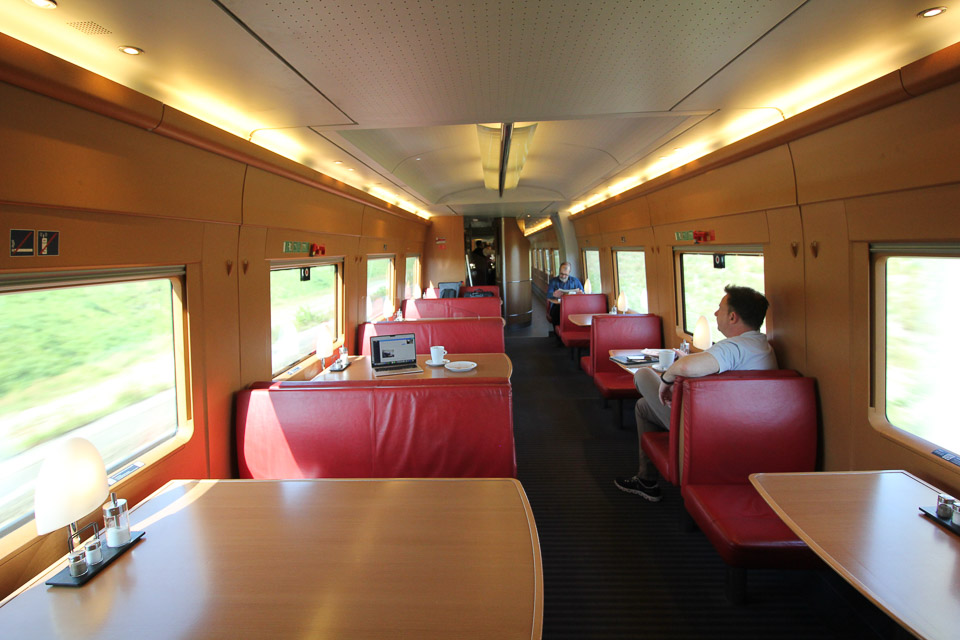 ICE restaurant carriagePhoto: Daniel Elkan
ICE restaurant carriagePhoto: Daniel Elkan
At somewhere like Frankfurt, you'll switch to another ICE.
Again this will be a simple platform change, like all the changes in daytime journeys by Eurostar + ICE to Austria.
By now you might be feeling peckish, and in that case, you are going to love the ICE restaurant carriages (pictured above).
No need to book—just stroll along, sit down and enjoy a good meal with wine or draft beer and hot and cold drinks. For its quality and convenience, it's all reasonably priced too.
What do we have in the UK? Someone pushing a trolley of mundane sandwiches down the aisle. The Germans do on-board dining properly.
Step 4: In some cases, take a Railjet or Eurocity
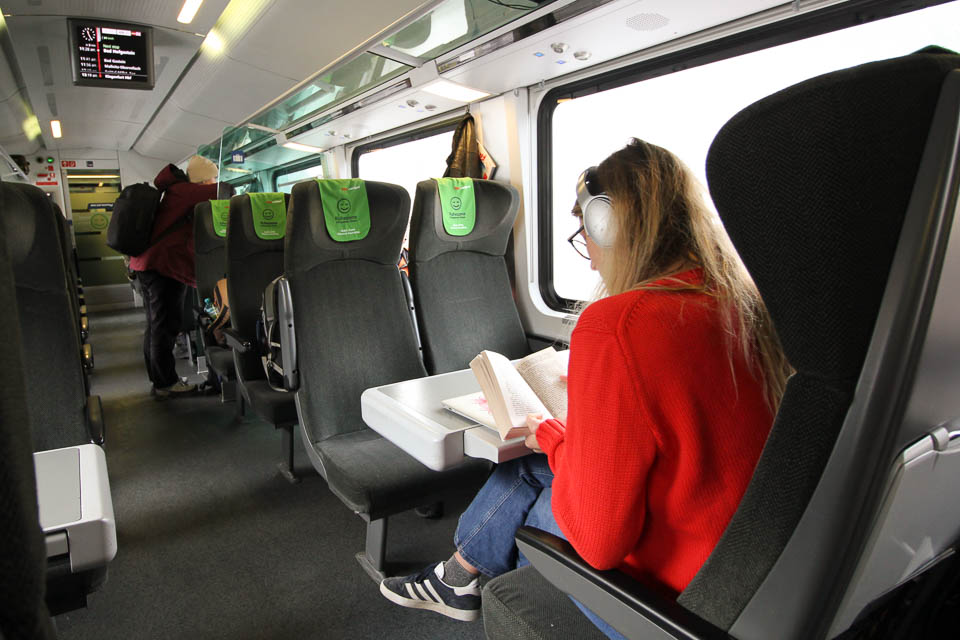 A RailJet carriagePhoto: Daniel Elkan
A RailJet carriagePhoto: Daniel Elkan
Your final leg may be on a Railjet or a Eurocity train. Both these trains are smooth and comfortable.
The Railjet also has an on-board restaurant, smaller than that on the ICE, but a welcome destination within the train, nonetheless.
On this penultimate leg, you'll start to see Alpine hills, mountains and villages gliding by—hopefully snow-covered!
Step 5: Transfer to your resort
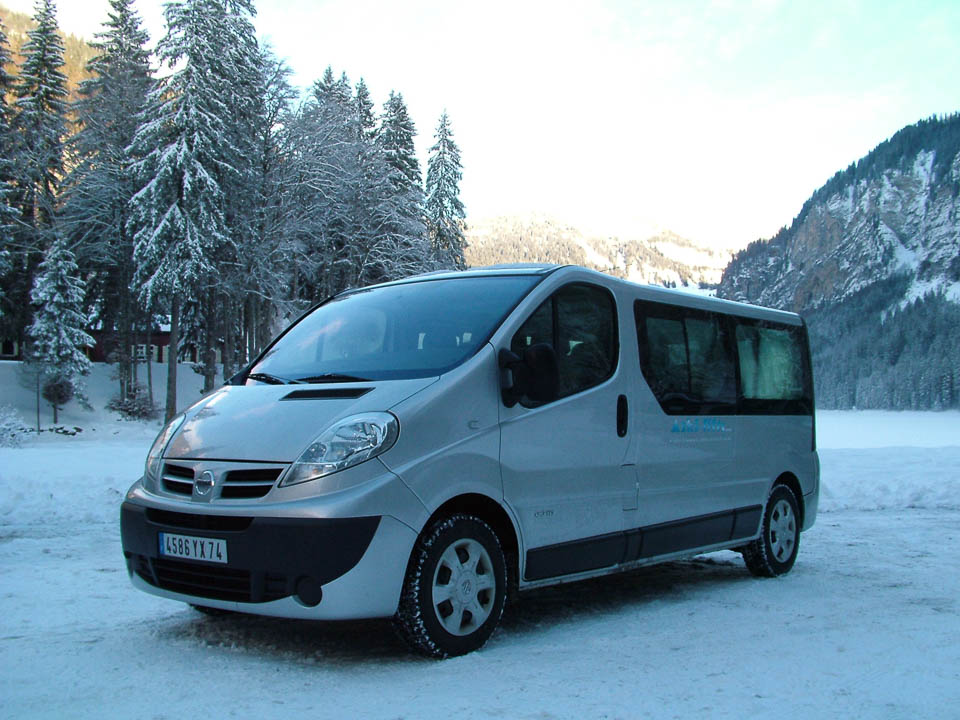 Photo: Ski Lifts
Photo: Ski Lifts
Many Austrian ski resorts have a station located in the village, so transfer time is minimal.
Others have a train station nearby—a short bus or taxi ride away.
The table below shows some popular resorts in Austria and the approximate transfer time from the nearest station.
| Ski resort | Train station | Transfer time |
| Alpbach | Jenbach | 20 minutes |
| Bad Gastein | Bad Gastein | Station is in the village |
| Bad Hofgastein | Bad Hofgastein | Station is in the village |
| Damüls | Bludenz | 35 minutes |
| Dorfgastein | Dorfgastein | Station is in the village |
| Ellmau | Kufstein | 19 minutes |
| Ellmau | Wörgl | 21 minutes |
| Hinterglemm | Zell am See | 21 minutes |
| Hopfgarten | Hopfgarten | Station is in the village |
| Ischgl | Landeck-Zams | 31 minutes |
| Kaprun | Zell am See | 9 minutes |
| Kitzbühel | Kitzbühel | Station is in the village |
| Lech | Langen am Arlberg | 20 minutes |
| Leogang | Leogang | Station is in the village |
| Mayrhofen | Mayrhofen | Station is in the village |
| Niederau | Wörgl | 7 minutes |
| Obergurgl | Ötztal | 47 minutes |
| St. Anton am Arlberg | St. Anton am Arlberg | Station is in the village |
| St. Johann in Tirol | St. Johann in Tirol | Station is in the village |
| St johann in Salzburg | St Johann im Pongau | 5 minutes |
| Saalbach | Zell am See | 18 minutes |
| Saalfelden | Saalfelden | Station is in the village |
| Scheffau | Kufstein | 16 minutes |
| Scheffau | St Johann in Tirol | 16 minutes |
| Schladming | Schladming | Station is in the village |
| Schruns | Schruns | Station is in the village |
| Seefeld | Seefeld in Tirol | Station is in the village |
| Sölden | Ötztal | 34 minutes |
| Söll | Kufstein | 14 minutes |
| Zell am See | Zell am See | Station is in the village |
| Zürs | Langen am Arlberg | 20 minutes |
Rail-ski map of Austria
Together with graphic designer David Cooper and Austria Tourism, SnowCarbon has created a rail-ski map of Austria.
The aim of the map is to help skiers and snowboarders plan rail journeys to ski resorts.
Here's a link to download the Austria rail-ski map as a PDF.

How long does Eurostar + ICE to Austria take?
If you do the journey in one go, here are some example journey durations.
You could also break up the journey en route, with a stopover in Brussels, Cologne, Frankfurt or another city in Germany and Austria.
How much does the Eurostar + ICE to Austria cost
London to Brussels costs £39 one way in Eurostar Standard and £70 one way in Eurostar Plus (the new name for Standard Premier).
Brussels to Salzburg, for example, starts at €28 one-way in 2nd class or €70 in 1st class.
Of course, these starting prices don't give you an idea of how much, realistically, something might cost when you book.
At a rough guess, we'd say that for off-peak dates it might cost £200 to £325 per adult. At a peak date, such as Christmas, New Year, or the February half-term, expect something more like £300 to £475 per adult.
However, these are only estimates, and we'd love to hear about your experience in terms of price.
How to book Eurostar + ICE journeys
 ICE 2nd class seatsPhoto: Daniel Elkan
ICE 2nd class seatsPhoto: Daniel Elkan
There are two ways to book tickets for Eurostar + ICE journeys:
Booking online
Websites like Trainline or Rail Europe can book all of the above legs, although, in terms of what trains you can use, you'll be at the mercy of whatever the algorithm chooses.
Rail Europe
An online ticket-booking agent with a relatively easy-to-use interface and well-written guides.
Trainline
An online ticket-booking agent, similarly with an intuitive interface and some useful guides.
Booking with a rail-booking agent
If you book with a rail-booking agent like The Travel Bureau or Trainseurope, you'll be able to get a more tailored itinerary because these agents can choose different routes and trains, using intelligence and experience that is human rather than algorithmic. We'd probably recommend them rather than booking online, but it certainly doesn't hurt to do an online booking search first and at least note down the schedule and prices that the websites propose.
The Travel Bureau
Established in 1984, The Travel Bureau has a knowledgeable team who can help book almost any journey.
There's a fee of £15 per traveller (sometimes less for larger groups)
Phone: (+44) 01902 326 662 (10:00 – 16:00 Monday to Friday)
Email: rail@thetravelbureau.co.uk
Trainseurope
Established in 1987, Trainseurope's knowledgeable staff can help book almost any journey.
There's a fee of £10 per traveller.
Phone: (+44) 01354 660222 (09:00 – 17:00 Monday to Friday; 10:00 – 15:00 Saturday & Sunday)
Email: info@trainseurope.co.uk
You can read more about general booking advice in our guide to booking ski holidays by train.
Ski holidays by train — Ask Snowcarbon
At Snowcarbon we are always happy to help you with suggestions for great resorts, fantastic accommodations, and how to get where you're going.
We look forward to helping you.
